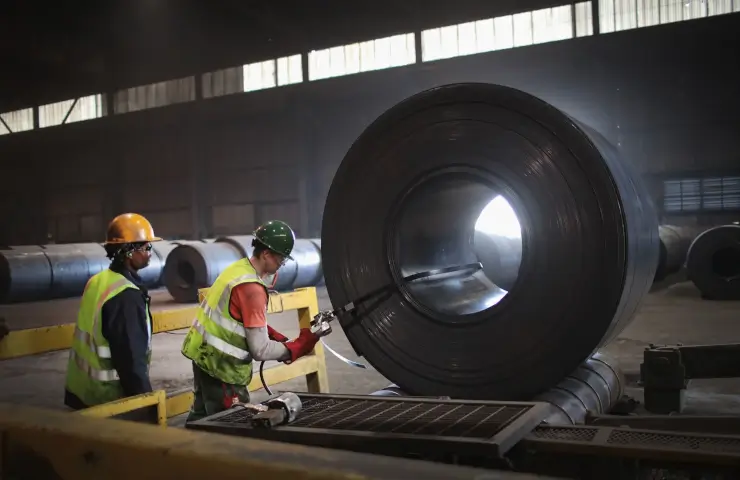Efforts by the US and EU to reach an agreement on mutual steel and aluminum are stalled as both sides seek to prevent the return of billions of dollars in import tariffs from the Trump era ahead of tomorrow's summit in Washington.
Sources say Bloomberg, Negotiators are still debating whether a political agreement on global steel and aluminum agreements will extend the suspension of tariffs or provide a clear path to their eventual elimination. Europe is pushing to shelve the measures, while the US wants to retain the option of using them in the future to ensure that Brussels adequately implements the agreement.
Another unresolved issue is the compatibility of the so-called Global sustainable steel and aluminum agreement (GSA) with international trade rules, especially amid concerns that it looks like a way for Brussels and Washington to unite against Beijing, the people say.
The US and EU want to reach an agreement by the time meeting on Friday between Joe Biden, European Commission President Ursula von der Leyen and European Council President Charles Michel. Both sides are eager to find a compromise that would avoid an escalation of the trade dispute, but such negotiations often come to the last minute as countries seek to avoid significant concessions.
Senior White House and EU officials are negotiating, the people said. on a preliminary political agreement that will cover two pillars of the GSA: combating excess production and reducing carbon emissions. Negotiations are ongoing, and European officials are in Washington ahead of the summit to meet with their American counterparts.
Although the interim deal falls short of a legally binding agreement, the GSA is seeking to resolve a dispute that began when President Donald Trump imposed tariffs on imports metals from Europe, citing national security risks. Failure to reach an agreement by October 31 would mean that $10 billion in tariffs between the EU and the US would automatically come back into force at the start of 2024.
On excess capacity, the EU is discussing launching new investigations in the coming months. which could lead to new tariffs targeting non-market practices in economies such as China, while the US could impose new levies of its own, Bloomberg previously reported.
The US imposed a 25% tariff on steel imports since 2018, and the EU has applied roughly the same level of tariffs on a range of steel imports under its own safeguards. This tariff level will serve as a guideline.
The EU will implement its part of the agreements targeting dirty steel through the Carbon Boundary Adjustment Mechanism, while the US may impose additional tariffs and measures.
The two sides could try to coordinate more closely after the US elections and after the EU finalizes its rules to determine which systems are equivalent to its own. The Biden administration had previously hoped to be exempt from CBAM and is concerned that European tariffs could impact U.S. exports.
Failure to reach an agreement structured on these terms could lead to a narrower understanding that, according to Essentially, it will buy you more time, some people say. Any agreement will need to be signed by EU member states.
Other details that need to be clarified are the range of countries (other than China) that will be affected by the overcapacity measures, and what will happen to existing tariff agreements. quotas that currently target European metals imports and were put in place when the Trump-era dispute was suspended. One of the people said the measure could use international research as a basis for gathering evidence.
If a political agreement can be signed this week, the two allies will work on an international agreement open to other countries. like-minded people.
According to the Organization for Economic Cooperation and Development, China is now the world's largest steel producer, accounting for more than half of the world's crude steel production.





